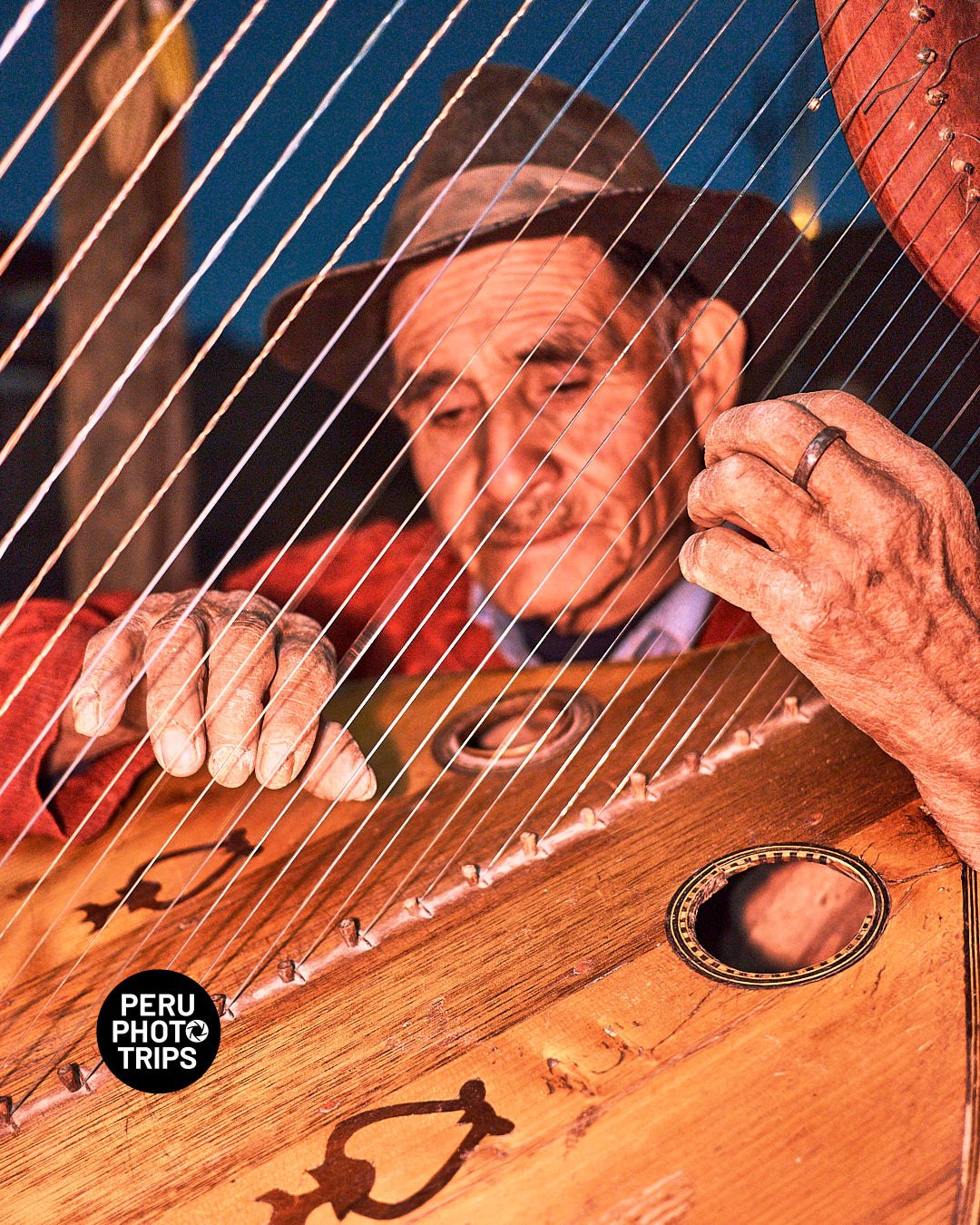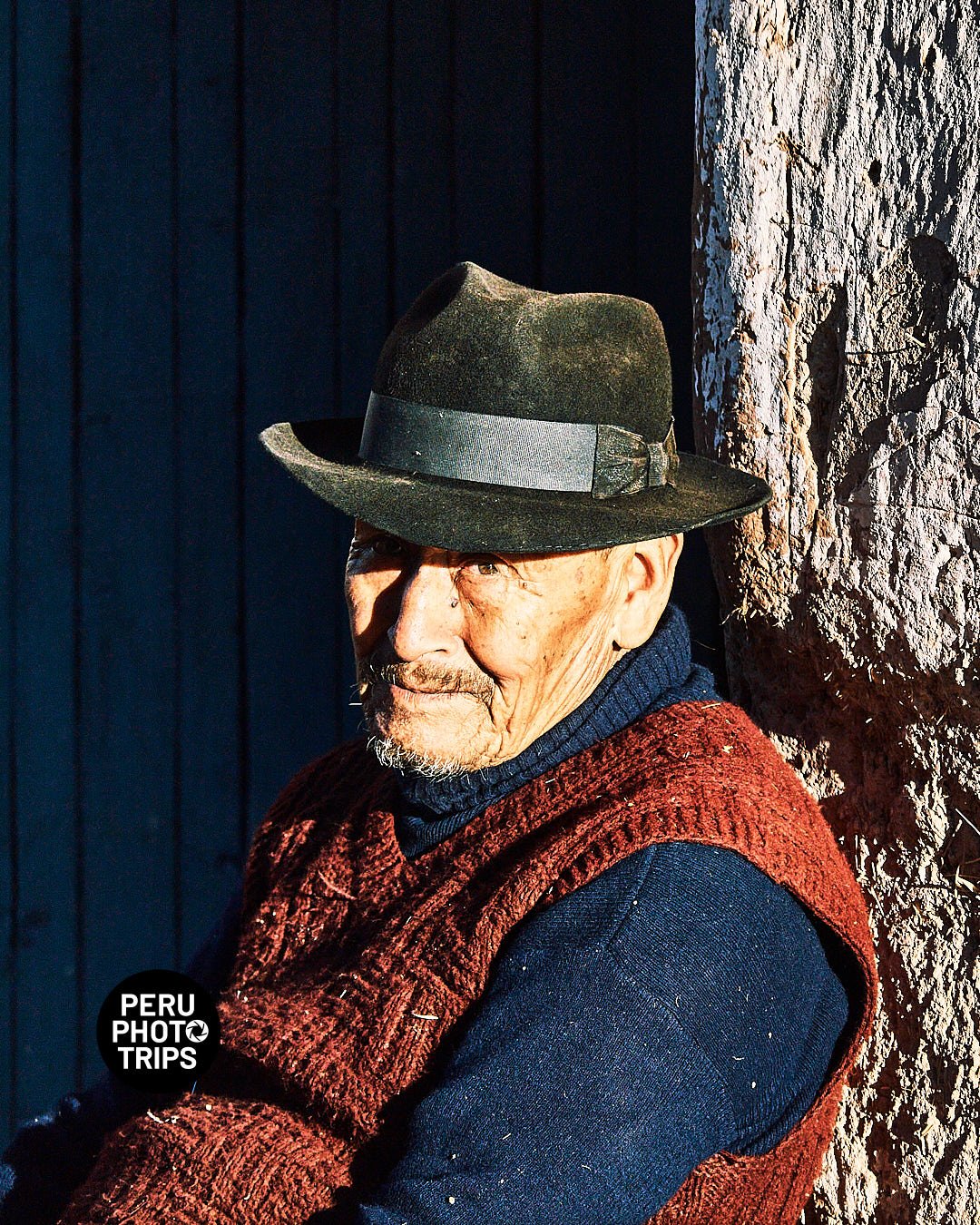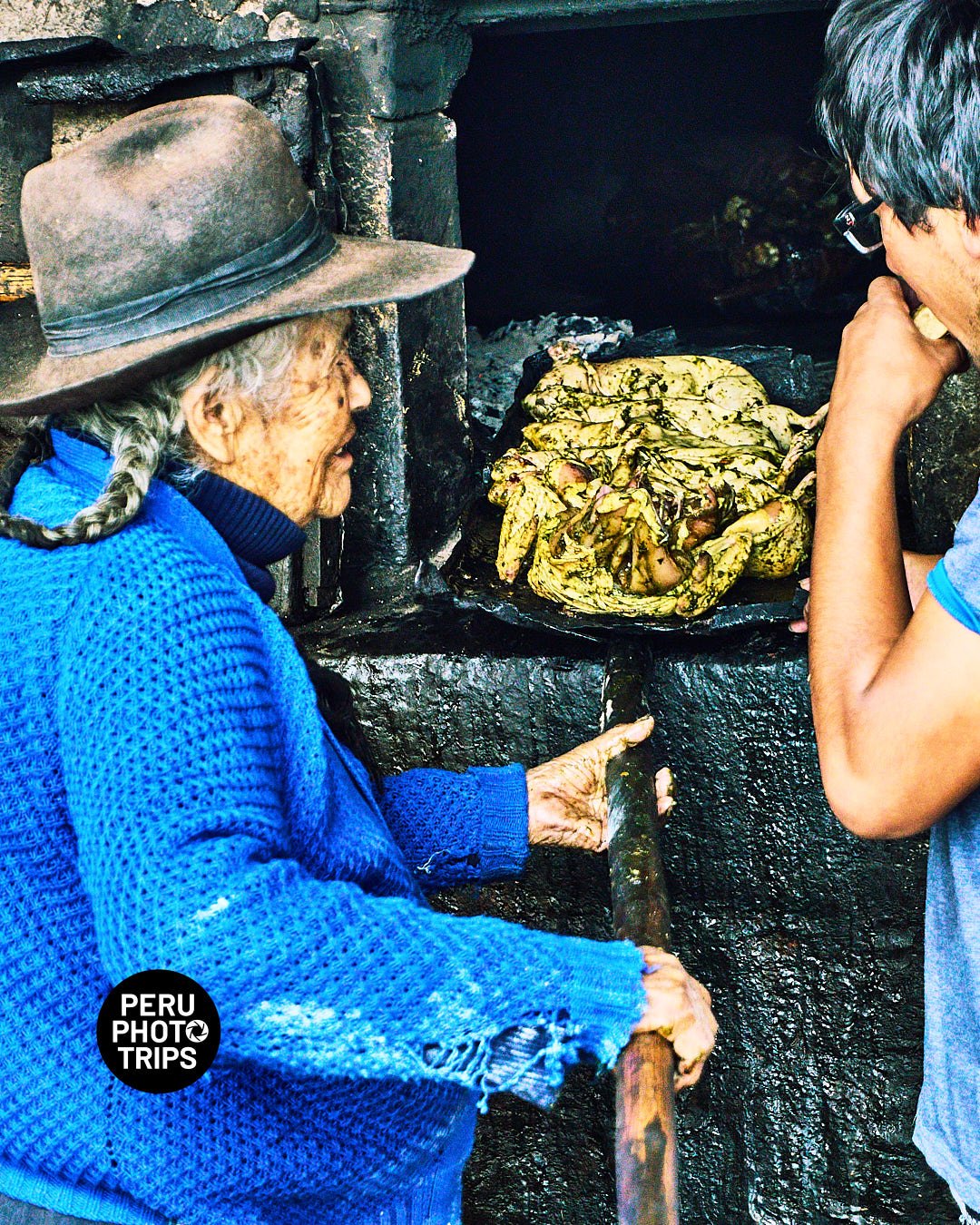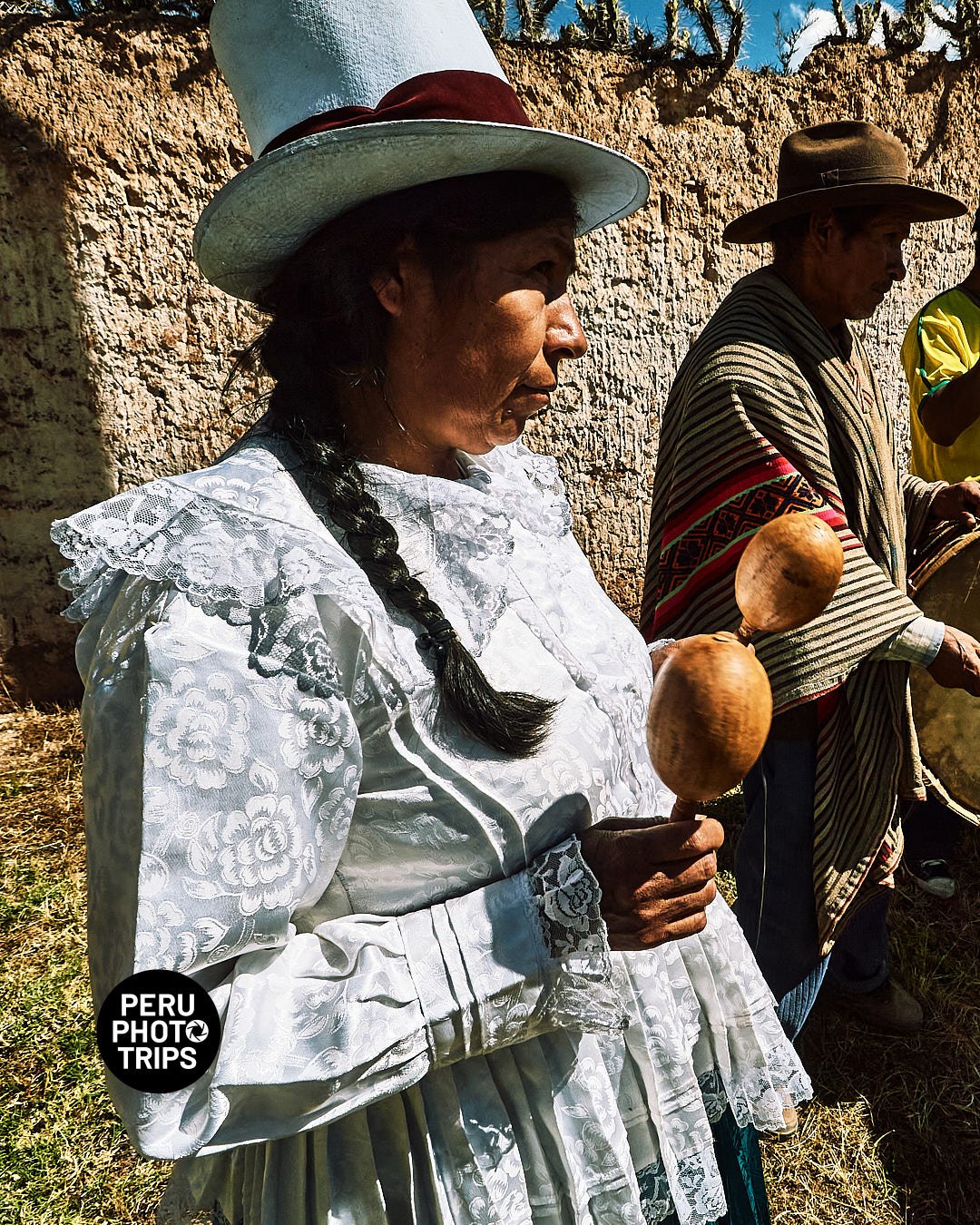some elder artists form maras
Like many villagers of the Cusco countryside, inhabitants of Maras have jumped into the communitarian or rural services.
I like to travel and stay out of the cities so I usually stay at Wayki Amilcar’s house in Maras. Staying there Amilcar took us for a walk to visit some elder people that are part of its cultural heritage. Maybe if you read this they all have passed away, it is a story written around 2012.
The hatmaker, Teodosio Argandoño, was 86, 40 living in Maras, he doesn´t speak too much, but when he looked at my brand new hat, bought in Cusco he told me: – you are wearing a Bolivian hat.
– Really? but the tag says Made in Cusco! – No, he said, they bring them and they only put the tag on!
And the women´s white hats? – well, they aren´t from here, they import from Celendin (in the north of Peru and one of the main suppliers of hats in all the country) Here they put them onto the mould and they adapt the Cusquenian style. (There is always someone to learn from).
Then we visit the harpist, Celestino Acurio. Celestino was born in Maras, but he lives poor, is a small farmer, old and quite loose living, with his brief presentations he earns some money, but not before had to be convinced to do it. He plays a different kind of harp known as Dominga, a tiny, big-belly, short harp, and enchanted us with a couple of Andean songs. It was a real luxury hearing him, they say is the last of the village that knows how to make sing this instrument.
The main character of the story is Wayki Amilcar, with his music band, a theatrical presentation acted in Quechua and if you ask, he can arrange a bunch of donkeys to make a loop on them. You can also stay at his home, absolutely cheaper than a hotel but with a much complete experience. If you like music, he can play something at night and if you can you may play with him with some instruments he has or just do the beat.
Before leaving you may go early to the grocery to buy some pink salt or try some bread from the clay oven of the old lady who is the only one that cooks there. The rest of the bread comes from the main cities. The economy has become global even in these small villages!
Want to arrange a photo trip? Contact me
Written and photographed by Jaime Quiroz Tirado


Como muchos otros poblados del Cusco algunos pobladores le han entrado a los servicios de turismo rural. Y aquí en Maras nos quedamos en casa del wayki Amilcar, que nos llevó a dar una vuelta por el pueblo a visitar a sus personajes, sacados de viejos libros ya allá por el 2012. Así que si lees esto tal vez ya es tiempo pasado.
El sombrerero, Teodosio Argandoño, tenía 86 años, 40 en Maras, me dijo al ver mi sombrero que según yo era muy cusqueño:
– tu sombrero es de Bolivia. -¿Cómo? Si dice en su etiqueta Made in Cusco! – No, lo traen y le ponen sellos de hecho en Cusco!!!
Y los sombreros blancos de las mujeres? pues– tampoco son de Cusco, son de Celendin!!!! Acá les ponen en el moldeador y le dan el estilo cusqueño. (Lo que se aprende cuando conversas con los que saben).
Luego visitamos al arpista, Celestino Acurio. Celestino es de familia mareña me cuentan como muchos Acurio, pero él vive en pobreza, es agricultor, ya viejo y un poco desordenado en su vida personal, con el turismo y sus breves presentaciones se gana un sencillo para subsistir. Eso porque fue convencido de participar. Celestino nos muestra su arte en la Dominga, un arpa chiquita, chatita y panzona y nos toca un par de huaynos, muy bueno y un lujo escucharlo pues como nos cuentan, es el último del pueblo que sabe tocarla.
Y claro el personaje principal de la historia, el wayki Amilcar, tiene su banda de música, presenta un teatro en quechua y te lleva a pasear con burros.
En su antigua casa se pueden alojar y comer, y seguro que será mucho más barato que en el Valle Sagrado, podrá no tener lujos, pero un gran corazón para la atención! Además si les gusta tocar algún un instrumento lo llevan y de seguro podrán compartir alguna música por la noche y al amanecer podrían pasar por la casa de la señora panadera, que en su horno de barro es la única que produce pan local tres veces por semana. El resto de pan llega de Cusco. Ah y en las bodegas pueden comprar su sal rosada de Maras a precio muy local.


